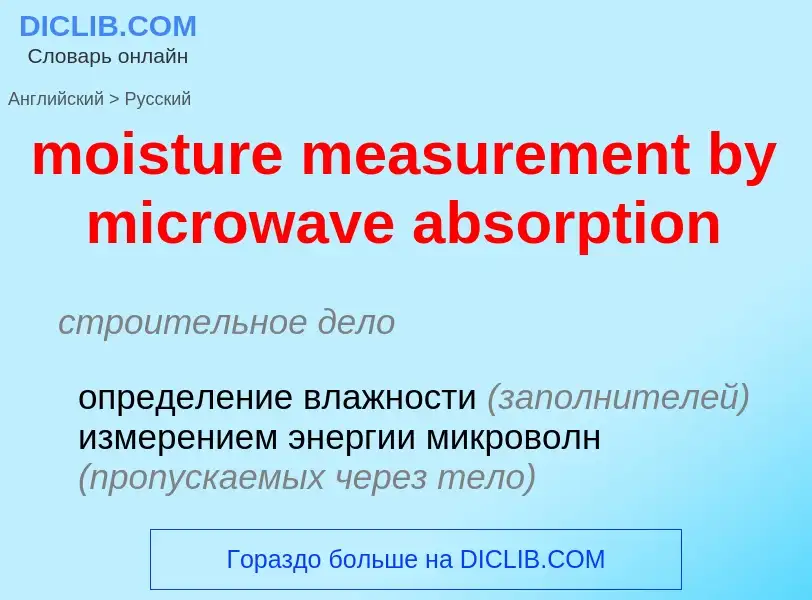Translation and analysis of words by ChatGPT artificial intelligence
On this page you can get a detailed analysis of a word or phrase, produced by the best artificial intelligence technology to date:
- how the word is used
- frequency of use
- it is used more often in oral or written speech
- word translation options
- usage examples (several phrases with translation)
- etymology
moisture measurement by microwave absorption - translation to russian
строительное дело
определение влажности (заполнителей) измерением энергии микроволн (пропускаемых через тело)
Definition
Wikipedia
In algebra, the absorption law or absorption identity is an identity linking a pair of binary operations.
Two binary operations, ¤ and ⁂, are said to be connected by the absorption law if:
- a ¤ (a ⁂ b) = a ⁂ (a ¤ b) = a.
A set equipped with two commutative and associative binary operations ("join") and ("meet") that are connected by the absorption law is called a lattice; in this case, both operations are necessarily idempotent.
Examples of lattices include Heyting algebras and Boolean algebras, in particular sets of sets with union and intersection operators, and ordered sets with min and max operations.
In classical logic, and in particular Boolean algebra, the operations OR and AND, which are also denoted by and , satisfy the lattice axioms, including the absorption law. The same is true for intuitionistic logic.
The absorption law does not hold in many other algebraic structures, such as commutative rings, e.g. the field of real numbers, relevance logics, linear logics, and substructural logics. In the last case, there is no one-to-one correspondence between the free variables of the defining pair of identities.


![A parabolic satellite antenna for '''Erdfunkstelle Raisting''', based in [[Raisting]], [[Bavaria]], Germany A parabolic satellite antenna for '''Erdfunkstelle Raisting''', based in [[Raisting]], [[Bavaria]], Germany](https://commons.wikimedia.org/wiki/Special:FilePath/Erdfunkstelle Raisting 2.jpg?width=200)
![Communications tower on [[Frazier Mountain]], [[Southern California]] with microwave relay dishes Communications tower on [[Frazier Mountain]], [[Southern California]] with microwave relay dishes](https://commons.wikimedia.org/wiki/Special:FilePath/Frazier Peak, tower and Honda Element.jpg?width=200)
![[[Richtfunkstelle Berlin-Frohnau]] [[Richtfunkstelle Berlin-Frohnau]]](https://commons.wikimedia.org/wiki/Special:FilePath/Frohnau.jpg?width=200)
![horn-reflector antennas]] on the roof of a telephone switching center in [[Seattle]], Washington, part of the U.S. [[AT&T Long Lines]] microwave relay network horn-reflector antennas]] on the roof of a telephone switching center in [[Seattle]], Washington, part of the U.S. [[AT&T Long Lines]] microwave relay network](https://commons.wikimedia.org/wiki/Special:FilePath/Hogg horn antennas.jpg?width=200)
